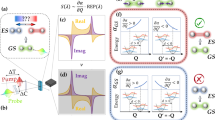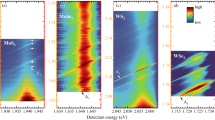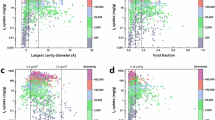Abstract
MONODEUTEROETHYLENE has been prepared (J.C.J.) in two different ways. Starting from vinylbromide and deuterium bromide, obtained by the action of deuterium oxide on redistilled phosphorus penta-bromide, the monodeuteroethylenebromide was prepared. This compound was submitted to the action of zinc and yielded monodeuteroethylene. Several spectra of the liquid compound were taken at a temperature of 140° C.; the lines are listed in the accompanying table. The strongest lines of ethylene also appeared.
This is a preview of subscription content, access via your institution
Access options
Subscribe to this journal
Receive 51 print issues and online access
$199.00 per year
only $3.90 per issue
Buy this article
- Purchase on SpringerLink
- Instant access to full article PDF
Prices may be subject to local taxes which are calculated during checkout
Similar content being viewed by others
References
Manneback, C., and Verleysen, A., NATURE, 138, 367 (1936). id., Annales Soc. Scient. Bruxelles, B, 56, 349 (1936); 57, 31 (1937).
Author information
Authors and Affiliations
Rights and permissions
About this article
Cite this article
DELFOSSE, J., JUNGERS, J., LEMAITRE, G. et al. Raman Spectrum of Monodeuteroethylene. Nature 139, 1111–1112 (1937). https://doi.org/10.1038/1391111a0
Issue date:
DOI: https://doi.org/10.1038/1391111a0
This article is cited by
-
Raman effect and the potential function of the ethylene molecule
Proceedings of the Indian Academy of Sciences - Section A (1939)



